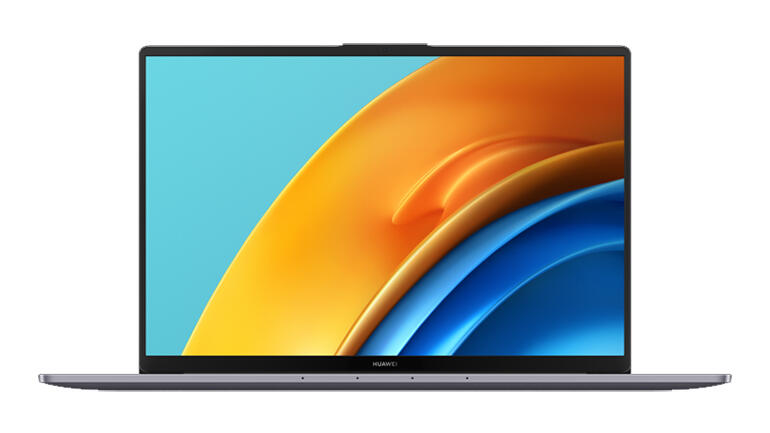'ZDNET Recommends': What exactly does it mean?
ZDNET's recommendations are based on many hours of testing, research, and comparison shopping. We gather data from the best available sources, including vendor and retailer listings as well as other relevant and independent reviews sites. And we pore over customer reviews to find out what matters to real people who already own and use the products and services we’re assessing.
When you click through from our site to a retailer and buy a product or service, we may earn affiliate commissions. This helps support our work, but does not affect what we cover or how, and it does not affect the price you pay. Neither ZDNET nor the author are compensated for these independent reviews. Indeed, we follow strict guidelines that ensure our editorial content is never influenced by advertisers.
ZDNET's editorial team writes on behalf of you, our reader. Our goal is to deliver the most accurate information and the most knowledgeable advice possible in order to help you make smarter buying decisions on tech gear and a wide array of products and services. Our editors thoroughly review and fact-check every article to ensure that our content meets the highest standards. If we have made an error or published misleading information, we will correct or clarify the article. If you see inaccuracies in our content, please report the mistake via this form.
Huawei MateBook D 16 review: Large screen and light weight, but battery life disappoints


Huawei MateBook D 16
pros and cons
- Thin and light for a 16-inch laptop
- 12th-generation Intel Core processors
- Webcam is above the screen
- Small, practical USB-C charger
- Moderate display resolution and brightness
- Mediocre speakers
- No SD card reader
- Disappointing battery life
Huawei's laptops have done well in recent ZDNet reviews. Only a few months ago the MateBook 16 earned plaudits in almost every department, the main drawback being the pop-up webcam's awkward positioning in the middle of the Fn key row. Before that, late last year, the MateBook 14s showed that Huawei could deliver impressive laptops with the camera in a more ergonomic location above the screen.
The new MateBook D 16 also positions its webcam above the screen. So, as 16-inch laptops become more common, does the MateBook D 16, which is powered by 12th-generation Intel Core processors, deliver good value for money? This certainly helps: at the time of writing, buyers in the UK get a MateView GT 27-inch monitor worth £199.99 (inc. VAT) thrown in for free.
There are two models, and I was sent the top-end configuration with an Intel Core i7-12700H processor, 16GB of RAM and a 512GB SSD, which costs £999.99. The entry-level model has a Core i5-12450H processor, 8GB of RAM and a 512GB SSD and costs £749.99.
Huawei MateBook D 16: 16-inch IPS screen, 12th-generation Intel Core i5 or i7, 8GB or 16GB of RAM, 512GB of SSD storage.
A 16-inch screen is sizeable, and the challenge for laptop makers is to fit it into a chassis that's as small, lightweight and portable as possible. The MateBook D 16 measures 356.7mm wide by 248.7mm deep by 18.4mm thick and weighs 1.7kg. It just about fits in my laptop backpack, and I didn't find it too heavy to lug around, but not everyone will agree with that.
The good news for mobile users is that the charger is a smartphone-style 65W mains plug and a USB-C cable. Not only does this add very little weight (137g) to a bag, it'll charge your phone as well as your laptop.
The Space Grey MateBook D 16 has an unobtrusive design with large Huawei branding on the lid but no other external distinguishing marks. Rubbery risers on the underside give the vents a little space and ensure that the laptop stays stable on a desk or table. It's all very workaday, and that's not a criticism. Note, though, that despite talk on the website of 'rigorous quality testing' there's no formal MIL-STD rating. To be safe, we'd recommend a protective sleeve for both storage and transportation.
The 16-inch screen is set in very thin bezels, with its 16:10 aspect ratio making for a particularly narrow bottom bezel. I measured the short edge bezels at 5mm to the outer edge of the lid and the upper bezel at 8mm to the outer edge of the lid. Huawei claims a 90% screen-to-body ratio. The edge of the lid protrudes slightly to accommodate the webcam, a design feature that also makes it easy to open the clamshell.
SEE: Best Windows laptop 2022: Top notebooks compared
The IPS panel, which is not touch-responsive, maxes out at 300 nits, which is arguably not bright enough for some outdoor settings. The resolution of 1,920 by 1,200 pixels (141.5ppi) is also a little low, and video and text sometimes suffered. The display's matte finish may not appeal to everyone. The lid doesn't hinge down far enough to sit flat on a desk, so any screen sharing needs to be done in standard laptop mode. The viewing angle of 178 degrees makes it easy for two people sitting side by side to view the screen at the same time.
Overall the screen feels pretty average, although it should be fine for mainstream productivity tasks and occasional video watching. If you need a more media-friendly display, look elsewhere.
There are two speakers on the underside of the chassis. Audio quality is average, with the usual dearth of bass tones. There's no distortion at top volume, although the latter isn't particularly loud. The lack of bass affects most listening, and as with the screen, media enthusiasts may be disappointed.
The 1080p FHD webcam offers an AI Camera feature that adjusts the viewing angle to keep you in the frame during video calls. However, there's no IR to enable Windows Hello face authentication.
The backlit keyboard has a positive action, and provides a separate number pad. The touchpad is on the small side.
Huawei has found room on the keyboard area to include a number pad to the right of the QWERTY keys. The pad's keys are narrower than those of the main keyboard, but fine when in use. However, the lack of space between the Enter key and the 7 and 4 keys, combined with the thinness of the Enter key, meant I constantly hit a number while aiming for Enter. I'd get used to this over time, but it was irritating during the test period. A fingerprint sensor is integrated into the circular power button above the right side of the keyboard.
The keys have 1.5mm of travel and bounce back strongly, making typing a comfortable experience. The keyboard is reasonably quiet in use: a heavy action results in a hollow 'thunk', but light-touch typists will generate almost no sound.
The touchpad is not as large as some, but it's sizeable enough to get the cursor around the screen easily, and is responsive in use.
Huawei caters for different budgets and requirements with Core i5-12450H/UHD Graphics and Core i7-12700H/Iris Xe Graphics models. There's 512GB SSD across the board, while the £749.99 Core i5 version comes with 8GB of RAM and the £999.99 model with 16GB. As noted earlier, UK buyers get a 27-inch Huawei monitor thrown in for free, too.
The MateBook D 16 has two USB-C and two USB-A ports, plus HDMI and 3.5mm audio in/out, but there's no SD card reader.
Huawei offers a decent selection of ports and connectors. The right edge has two USB-A ports (USB 3.1 Gen 1 and USB 2.0), while the left edge has a pair of USB-C ports (one of which supports DisplayPort), a full-size HDMI connector and a 3.5mm audio in/out jack. There's no SD card reader, unfortunately.
The Huawei MateBook D 16 has a 60Wh battery, which depleted to 49% after three hours under my mainstream test regime involving writing into web apps, streaming video and music, browsing the web, and having multiple app and browser windows open at the same time. This suggests battery life of around six hours, so it's unlikely that you'll get a full working day away from mains power. Make sure you carry that (lightweight) charger with you.
Conclusions
The Huawei MateBook D 16 packs a 16-inch screen into an impressively compact chassis. It has a pleasing minimalist design, and a good array of ports. The keyboard is comfortable to use, although the number pad is rather close to the Enter key and there may be a learning curve to avoid mis-hitting it. Thankfully the webcam sits above the screen, rather than in the Fn key row.
Downsides include mediocre speakers and a moderate-quality screen -- higher resolution, and perhaps touch sensitivity, would be welcome options. Battery life also disappoints, and all-day mains-free usage may be beyond this laptop. If you need a large-screen laptop for mainstream tasks, then the MateBook D 16 could be a good-value option. However, more demanding media-heavy use cases are not its forte.
Huawei MateBook D 16 specifications
| OS | Windows 11 Home |
| Dimensions | 356.7mm x 248.7mm x 18.4mm (14.04in. x 9.79in. x 0.72in.) |
| Weight | 1.7kg (3.75lbs) |
| Display | 16-inch IPS, 1920 x 1200 (16:10, 141.5ppi), 300 nits, 1200:1 contrast ratio, 100% sRGB |
| Screen to body ratio | 90% (claimed) |
| Viewing angle | 178 degrees |
| Touch screen | no |
| Processor | Intel Core i5-12450H, Core i7-12700H |
| Graphics | Intel UHD Graphics (Core i5), Iris Xe Graphics (Core i7) |
| RAM | 8GB, 16GB |
| Storage | 512GB (NVMe PCIe SSD) |
| Battery capacity | 60Wh |
| Battery charger | 65W, 137g |
| Wi-Fi | Wi-Fi 6 (802.11ax) |
| Bluetooth | 5.1 |
| Connections | 2x USB-C, 2x USB-A (USB 3.2 Gen 1, USB 2.0), HDMI, 3.5mm audio in/out |
| Keyboard | full-size, backlit, with numeric keypad |
| Fingerprint reader | integrated into power button |
| Camera | 1080p FHD |
| Audio | 4x mics, 2x speakers |
| Applications | Huawei PC Manager, Display Manager (Eye Comfort Mode), Huawei Factory Reset |
| In the box | Huawei MateBook D 16, 65W USB-C power adapter, USB-C charge cable, quick-start guide, warranty card |
| Price | £749.99 (inc. VAT), Core i5, 8GB RAM, 512GB SSD) • £999.99 (inc. VAT), Core i7, 16GB RAM, 512GB SSD |
Alternatives to consider
Laptops with 16-inch screens are relatively new to the market, but there's already a good choice of products in this form factor, which offers a decent amount of screen real estate while avoiding the extremes of bulk and weight found in many 17-inch devices. Here's a couple of leading contenders.
RECENT AND RELATED CONTENT
Huawei MateBook 16 review: Powerful and well priced, but the webcam is a problem
Apple 16-inch MacBook Pro (M1 Max, late 2021) review: Apple supercharges its flagship laptop
Huawei sees revenue dip 28%, pivots to tap green demand
The 10 best Windows laptops: Top notebooks, 2-in-1s, and ultraportables
Read more reviews
- Meeting Owl 3: Conference-cam upgraded after recently resolved security issues
- Realme GT Neo 3 150W review: Super-fast charging heads up a solid mid-range specification
- Meet espresso Display V2, the world's thinnest portable monitor
- Bowers & Wilkins Px7 S2 review: Premium headphones that rival Sony and Bose
- Logitech G29 racing wheel review: The perfect starter set for asphalt racers